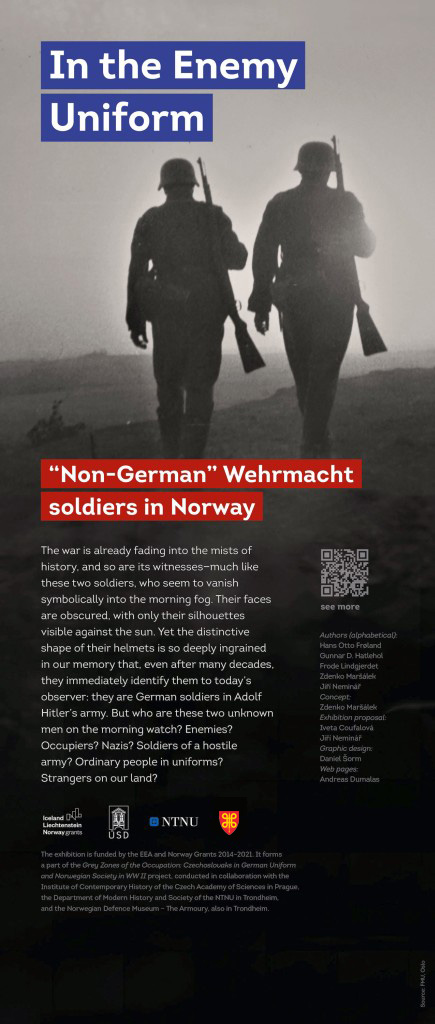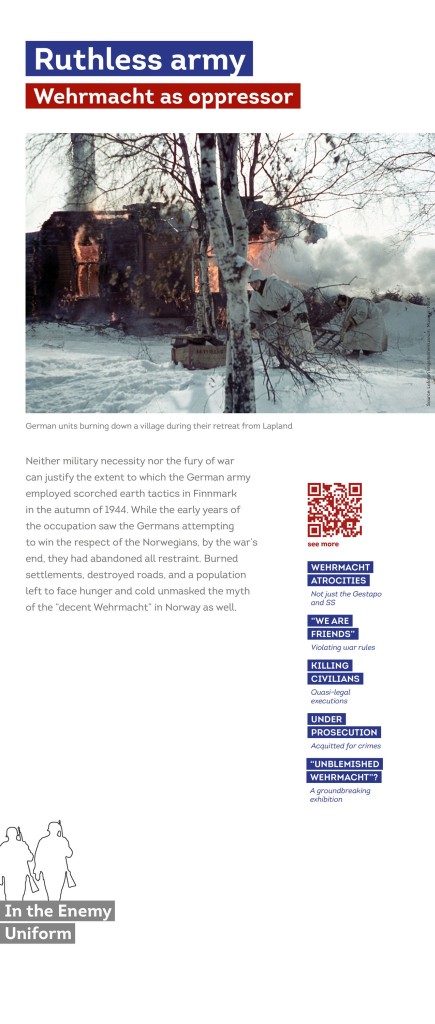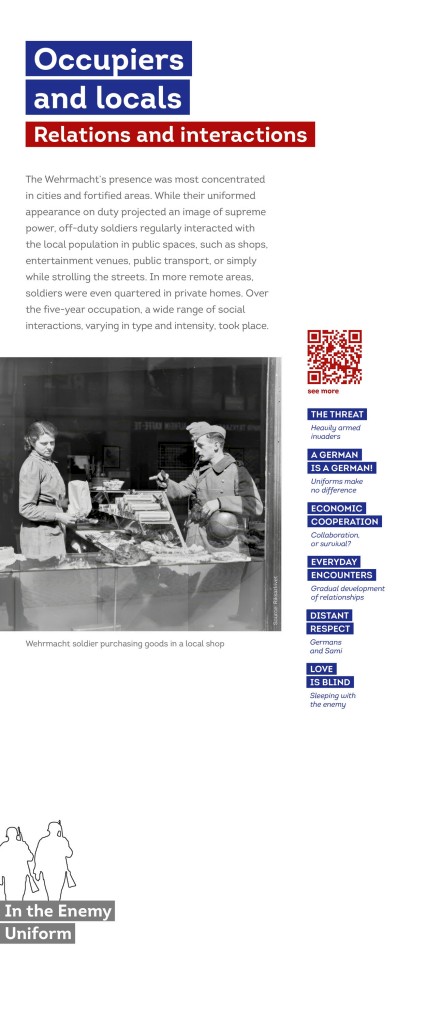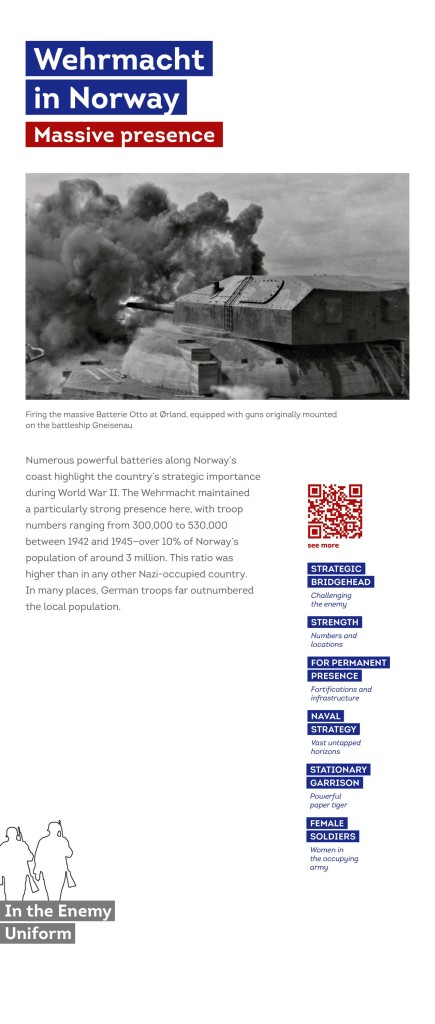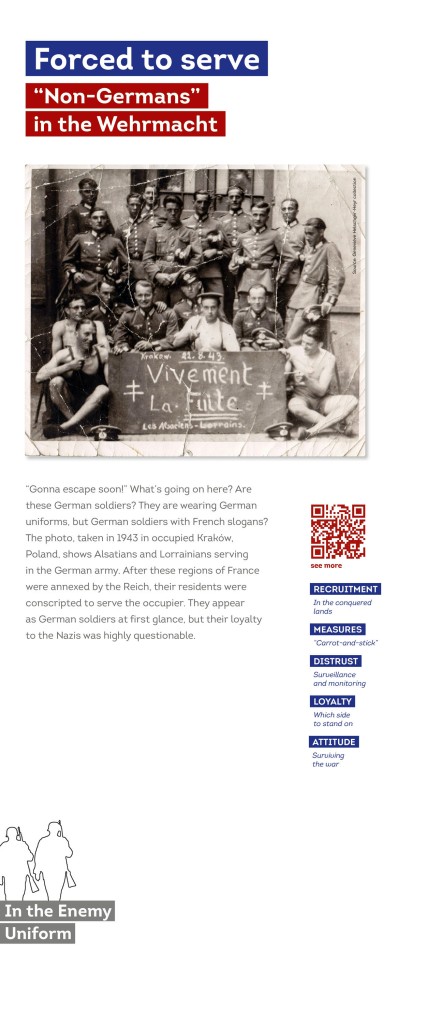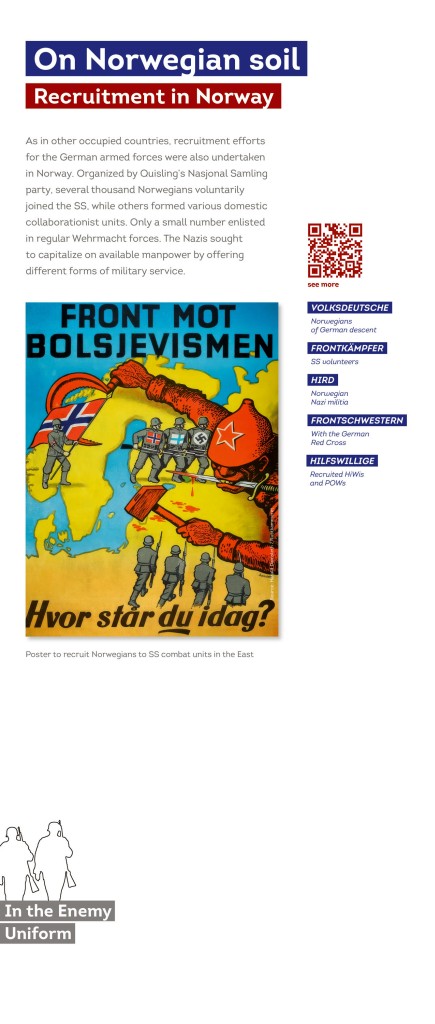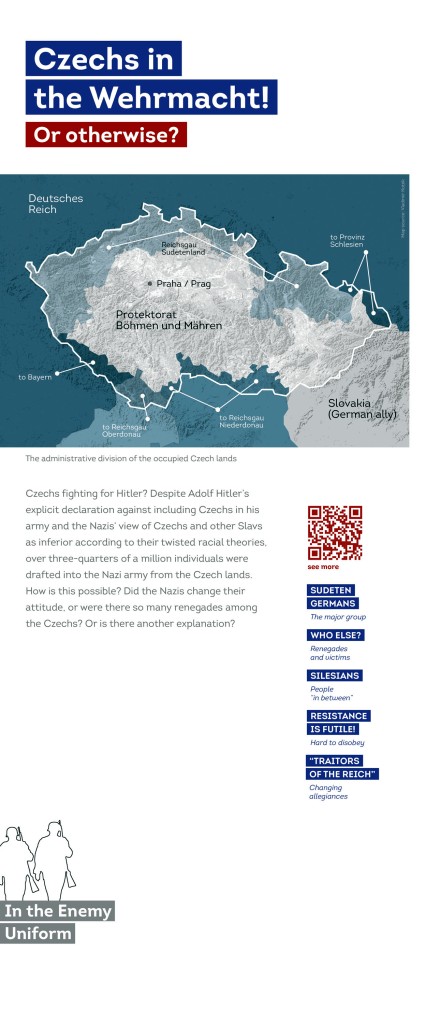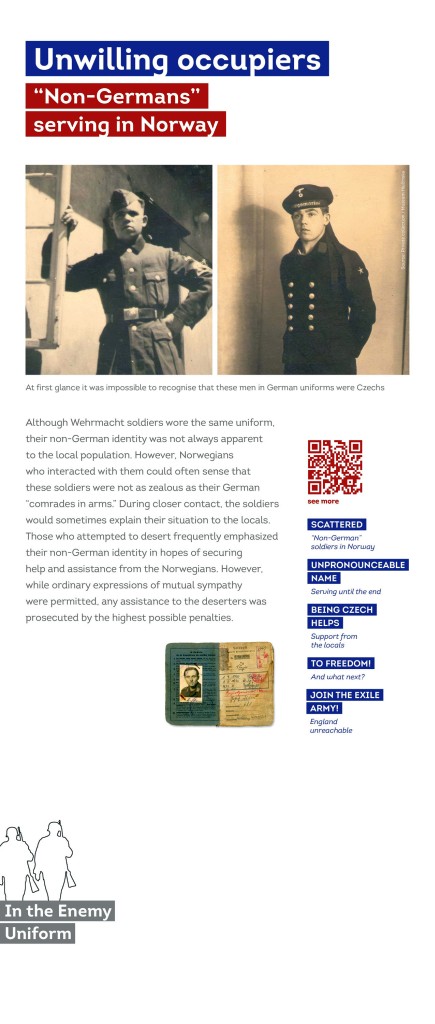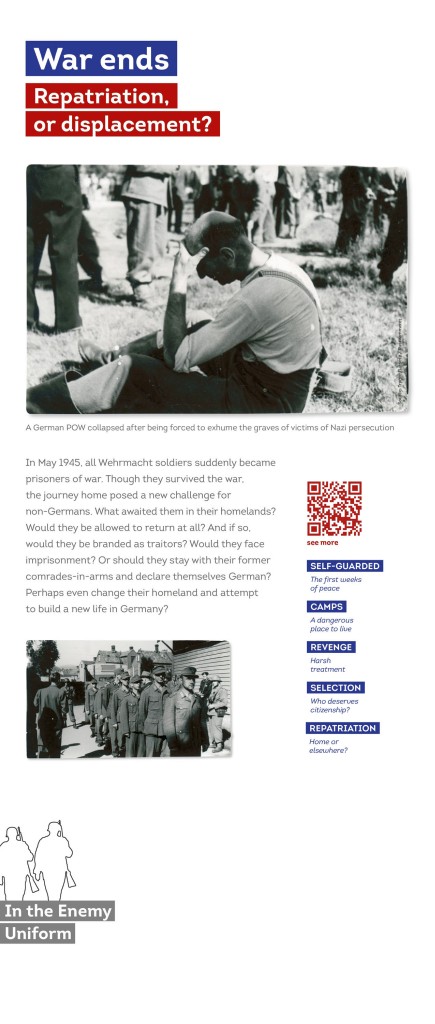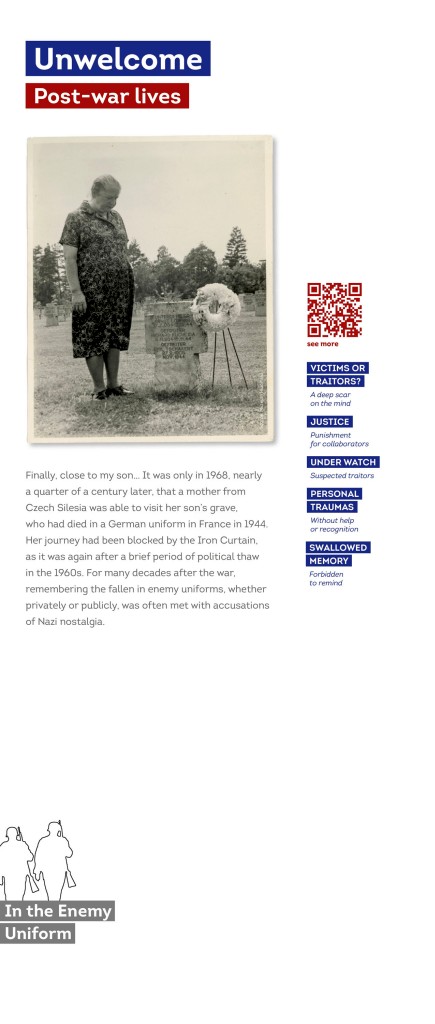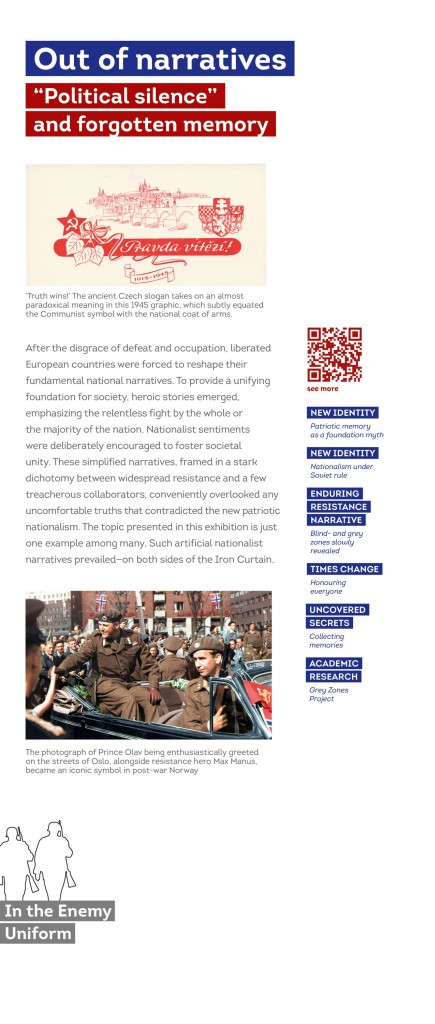The aim of the exhibition is to draw visitors‘ attention to the pitfalls of the seemingly self-evident canons of historical narratives that are presented to us from childhood and throughout our education, shaping our opinions and perspectives on the past. Simplifications and abbreviations that lead to a black-and-white portrayal of the world and society are often tools of propaganda and ideologies that deliberately construct or co-create these narratives. The depiction of the Second World War exemplifies this phenomenon. Post-war “national narratives” were similarly constructed across virtually all European countries that experienced occupation. However, the themes of national unity, heroic resistance from all segments of society, and unyielding hatred for the occupiers often represent a wistful ideal. This ideal, supported by an unspoken “social agreement,” became the foundation for a new, proud national identity. But was the reality truly so black and white? Was society genuinely divided into a fighting majority and a few despicable collaborators? Only by relegating the war to history can we more soberly examine the society of that time—its divisions, the attitudes and strategies of “ordinary” people, and their varied, often conflicting motivations and interests. Instead of relying on simple dichotomies and bipolar perspectives, we uncover a surprisingly wide spectrum of experiences within which people navigated their lives. The exhibition’s theme—citizens of occupied countries serving in the Nazi army—represents just one facet, illustrating the complexity of history and the lives of individuals caught in the tumult of significant upheavals.
The exhibition is designed as a combined experience. The physical component consists of roll-up banners that present a selected topic in chronological and thematic continuity, symbolized by central iconographic material intended to attract and unsettle visitors, provoke questions or emotions, and foster interest in further knowledge. This goal is further supported by the main text on the banners, along with sometimes provocative titles for subtopics and short probes. To enhance clarity, an additional component is available on the exhibition’s website, which is integral to the overall experience. The authors aimed for visitors not to feel overwhelmed by the amount of information; instead, they can choose from various offerings based on their interests and needs. The website elaborates on the individual subtopics through concise informative texts, accompanied by striking illustrations. Longer summary texts are included at the end to provide visitors with more in-depth information about specific topics.


